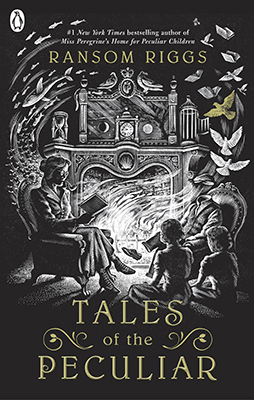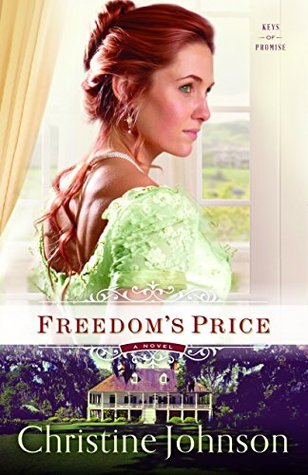 You know that feeling? The one you get when a book sounds completely up your street, fit to bursting with all the things you love and you can’t wait to devour it? You know that consecutive feeling? The one where said book not only lives up to your hopes, but defies them, thrilling and surprising you in equal measure? It’s a feeling many readers strive for, waiting for that next elusive five star book. It’s a feeling I am so completely happy to say I found with Alison Littlewood’s latest novel, The Crow Garden.
You know that feeling? The one you get when a book sounds completely up your street, fit to bursting with all the things you love and you can’t wait to devour it? You know that consecutive feeling? The one where said book not only lives up to your hopes, but defies them, thrilling and surprising you in equal measure? It’s a feeling many readers strive for, waiting for that next elusive five star book. It’s a feeling I am so completely happy to say I found with Alison Littlewood’s latest novel, The Crow Garden.
As soon as I read the blurb for this book, I knew I had to have it. Having studied English Literature, I can say with a firm resolve that I am a Victorianist through and through. The fact that this book is an historical novel, set in this period, immediately had me intrigued. This setting, combined with the mention of asylums, strange occurrences, doctors who swear by phrenology, mesmerism and the occult, had me coveting this Gothic tale even further. Of course, credit must be given where credit is due for this stunning cover design by Leo Nickolls. It really is a work of art, the eerie quality of the novel reflected beautifully in the cover. Naturally, with Halloween fast approaching, this book really did seem like the perfect atmospheric read. When it arrived in the post for me to review I was ecstatic!
This book follows Nathaniel Kerner, a young and recently qualified ‘mad-doctor’ who is keen to further his name in this field of science. Taking a position at Crakethorne Asylum, Nathaniel is disappointed to find in its proprieter a man who is more interested in the theory of phrenology and collecting human skulls than the actual minds of his patients. Undeterred, Nathaniel attempts to understand his patients, becoming increasingly interested by the case of Mrs Victoria Harleston. Victoria’s husband has accused her of hysteria, eager to find anyone who can cure the madness out of his wife. Victoria is not what Nathaniel expected; instead of a ‘mad’ woman he finds one of grace and sensitivity, someone he longs to save from her delusions. But as time passes Nathaniel cannot help but wonder if there is truth to Victoria’s beliefs that her husband is hiding a deadly secret. In a bid to save her, Nathaniel finds himself drawn into a spectral world where séances and stage mesmerism threaten to disturb his own mind.
I really enjoyed the opening of this novel and found myself instantly hooked from the very first page. It’s incredibly atmospheric, describing Nathaniel’s journey to Crakethorne and the location in which the asylum is located. We immediately have this sense of the natural world which is wild and uncontrollable, an entity which somehow feels threatening. In this way it reminded me quite clearly of Wuthering Heights and the way that the moors are almost represented as their own character. This eerie atmosphere is continued when Nathaniel actually lays eyes on the walls of the asylum itself. This is a ‘large, solid creation, built for permanence rather than enjoyment’ (p. 5). As you can imagine, the building appears to be highly reflective of societies view of mental health at the time, with Nathaniel stating that ‘the many windows reflected back the sky rather than admitting views of what lay within’ (p. 5), with the iron bars only adding to this image of something restrained within. The final opening image of Nathaniel walking through the gates of Crakethornw was extremely effective because of what the author had already built up. I couldn’t help but fear that he may never come back out . . .
If the opening is immediately suggestive of a Gothic novel then the rest of the book only heightens this. One of the techniques used within the book to great effect was that of mixed media, especially in the epistolary form. We get letters, diary entries, patient transfers, case notes and much more, all working together to give a very rich and very insightful account into the life of Nathaniel and his patients. The use of such methods, significantly the epistolary form, is something which is a classic trope in Victorian Gothic fiction, and indeed Gothic fiction in general, and can be seen to great effect in novels such as Dracula. The use of these methods strives to authenticate the accounts we are given, attempting to make the plot all the more unsettling because of its potential reality. I felt this was very true of Littlewood’s novel, especially with the scientific themes throughout the book and how these are recorded through various means. I also really liked the techniques used as I felt it made the novel much more inclusive and intimate, especially the journal entries, allowing us to feel as though we are truly getting this insight not only from a professional, but also simply from a man.
It’s very quickly evident upon reading that this is a novel which is very much grounded in its Victorian time period. The nineteenth century was a period of extremely prejudiced views towards mental health, and indeed many larger social issued in general. This novel examined this brilliantly, exploring the theme of madness and portraying the stigma which surrounded those unfortunate enough to be sent to an asylum. As the book discusses, even those with conditions such as epilepsy were often sent to an asylum. Likewise, one such character in this novel is only a young boy of nine, yet he was ‘old enough to shame his family’ and ‘that is what matters’ (p. 18).
What I really loved was how she interwove this theme of madness with that of class, highlighting the hypocrisy of society and the politics which governed how those struggling with disorders and mental health issues were treated. If you were unfortunate enough to be of a lower worker class, chances are highly likely that you would never again see outside of an asylum. Indeed, Littlewood examines how this class of society were deemed to be more susceptible to madness, with one doctor stating ‘You will find domestics a class very prone to madness’ (p. 12), a belief a modern society can only shrink in horror from. The frightening thing is if society expects you to be mad, how can you ever prove you are not? The book is all the more effective because of the true horrors it is portraying.
Just as the author looks at class and its links to madness, so does she look at gender and the ways in which this was also viewed in such a firm patriarchal society. Many of the women who were sent to asylums within the Victorian period were often diagnosed with ‘hysteria’, such as the character of Victoria is. This was a term often applied to woman who refused to conform to the ideologies of their time, with women who were often perceived as sexual or subversive of their gender being labelled with this medical diagnosis. Indeed, madness was something which was seen as highly prominent in the female sex, and its interesting to note that the word ‘hysteria’ actually comes from the Greek word for uterus or womb. The author uses the character of Victoria to analyse not only the mental disorders attributed solely to women, but also how avidly the patriarchy longed to confine women to the domestic sphere. Victoria is seen as expressing a ‘marked disinclination to live in accordance with her duties as a wife’ and as such is diagnoses with hysteria. Because she does not fit into this womanly ideal, because she does not meet societies expectations, she is deemed mad, much as Bertha is often viewed in Jane Eyre.
It is not only the above themes and Victorian ideas which I thought were superbly executed. This is a novel with excellent characterisation. Even when I found myself disliking someone, I could not help but praise Littlewood for what she had created. The characters are never straightforward, but instead rich and colourful, with complex histories and surrounding situations. I feel like I could read this novel again and still find just as many new things to consider about them. Take Nathaniel himself as an example; he is struggling to outrun his family past, eager to prove himself in the scientific field of madness. Yet, what about his own sanity? As we read, we cannot help but question him the more we learn. Likewise, he appears to be a more accepting kind of doctor, a man who wants to understand the mind of his patients as opposed to using painful therapies and phrenology. Even so, Nathaniel still expressed views and beliefs which are extremely biased, prejudiced and often sexist. He’s this character of duality, a man who appears to want to help yet is still constrained by societies views. Likwise, Victoria is a character just as capable of a double nature. She is the meek and gracious Victorian lady of good social standing, yet the dark and strange lady involved with otherworldly deeds. Indeed, this theme of duality is another prevalent themes within Gothic Fiction, blurring the lines and creating an even greater tension.
As if all of the above wasn’t enough to make this novel fantastic in my eyes, it is also made all the more impressive because of its writing. Littlewood is an excellent writer, and she was able to stay completely within the voice and mindset of our narrator, Nathaniel, throughout. The writing was completely convincing and was a superb example of a Victorian pastiche. Not only was she able to sustain the narrative so effectively, maintaining an authentic voice, she is also just a very good and skillful writer. Through her words and choice of description she is able to conjure an extremely vivid world which I just could not get enough of.
Aiding this great writing throughout was the pacing of the book, which I though was really great. If anything, I would have loved for the book to be slower and perhaps longer simply so I could get more of the intricacies of the characters and the story! She is able to use this pace to sustain her plot, which is just completely engaging. I thought the premise was interesting from the get go, but the more I read and the deeper we dug, the greater my interest became. The unsettling suggestions peppered throughout encouraged this, giving it a speculative edge which I just yearned to unravel. Even the ending was able to uphold the rest of the novel. It did not give complete closure, but I actually loved it all the more for this. It was strange and eerie, and whilst it wasn’t completely tied up it worked nonetheless because of what the author had created in the rest of the book. I even guessed the direction the book was heading and it still didn’t ruin my enjoyment!
As you can probably tell, I adored this book. I was looking for an atmospheric, autumnal read to get me ready for Halloween and this delivered on every count. In fact, it surpassed it, giving me a book which I know I will want to re-read time and time again. If you love the Victorian period, especially Sensationalist novels, please please give this a go! It reminded me so much of writer such as Wilkie Collins, which is very much deserving praise. All in all, a brilliant example of historical fiction which ticked all of the boxes for me.
Publisher: Jo Fletcher Books
Rating: 5*/5*
Disclaimer – I was very kindly sent this book in exchange for a review. I will only ever post my own honest opinions and will NOT write a favourable review in exchange for a complimentary book.
Advertisements Share this:





